Pickleball, a game that’s taken the sports world by storm, is not just about having a good serve or a powerful backhand. It’s also about where you stand and how you move. Mastering court positioning and movement strategies can be the difference between winning and losing.
Whether you’re a beginner looking to improve your game or an experienced player aiming for that competitive edge, understanding the nuances of positioning can elevate your pickleball play. From knowing when to stay at the baseline to mastering the art of the kitchen, it’s all about making the right move at the right time.
Importance of Pickleball Court Positioning
Pickleball court positioning is pivotal in developing a strong game strategy. Those who understand and utilize effective positioning find themselves with an advantage over opponents who may rely solely on strength or speed. In pickleball, it’s not just about hitting the ball but placing oneself in the best possible location to make the next shot. This strategic movement can significantly impact the game’s flow and the player’s ability to control the match.
The essence of mastering court positioning lies in the ability to anticipate an opponent’s next move. By positioning themselves correctly, players can cover the court more efficiently, making it difficult for opponents to find open spaces. This requires not only physical agility but also a sharp mental game. Experienced players often use positioning to set up offensive plays or to fortify their defense, proving that where one stands on the court is as crucial as how well they hit the ball.
Moreover, successful court positioning involves understanding the ‘Sweet Spots’—areas of the court from which a player can effectively respond to a wide range of shots. These spots vary depending on the dynamics of the game, the player’s skill level, and the opponents’ strategies. Finding and occupying these spots can turn the tide in closely contested matches, making positioning a skill that players at all levels strive to perfect.
Strategic positioning also enables players to make shots with greater accuracy. By being in the right place, players have better angles to hit winning shots and can more easily counter their opponents’ serves and volleys. This advantage is especially noticeable near the net, in the area known as the kitchen. Mastery over kitchen play is often what separates intermediate players from advanced ones, highlighting the nuanced nature of pickleball court positioning.
Consistent practice and match play are essential for players aiming to improve their positioning. Drills that focus on rapid movement across the court, transitioning between offense and defense, and predicting opponents’ shots can all contribute to better positioning. Additionally, watching and analyzing games of higher-level players can offer insights into effective positioning strategies and movements.
Understanding the significance of court positioning can revolutionize a player’s approach to pickleball. By emphasizing not only the physical but also the strategic aspects of the game, players can elevate their performance to new heights. Whether it’s controlling the game’s tempo, setting up shots, or securing points, correct positioning is the foundation upon which successful pickleball strategies are built.
Understanding the Basics of Court Positioning

In pickleball, the foundation of any strong game plan is rooted in understanding court positioning. Efficient movement and strategic placement on the court are vital to outmaneuvering an opponent. The basics of court positioning dictate that players should aim to control the center of the court, allowing them to easily pivot to either side in response to their opponent’s moves.
The Center Position is often referred to as the command post. From here, players have the advantage of covering the largest portions of the court with minimal movement. This position is especially crucial during a volley, as it allows players to respond quickly to shots on both the forehand and backhand sides. Mastering the art of quickly returning to the center position after each shot can drastically improve a player’s defensive and offensive game.
Moving beyond the center, players should also focus on Maintaining a Forward Position whenever feasible. Staying closer to the net cuts down the angles that the opponent can use, making it harder for them to hit unreturnable shots. However, knowing when to retreat is just as important. High or deep shots by an opponent require quick backward movement to prevent losing ground or offering up easy points.
Effective court positioning is not just about where a player stands, but also how they move. Lateral Movement and Split Steps are essential techniques for maintaining balance and readiness. Lateral movement ensures that players can move side to side efficiently, covering the court without losing speed or footing. The split step, a small hop as the opponent hits the ball, primes players for a quick reaction, enabling them to move in any direction with speed and agility.
Practicing these movements and positions doesn’t just happen during matches. Drills focusing on quick returns to the center, controlled volleys from the net, and strategic movement from the baseline are key. Players often find that breaking down their movements and positions into manageable drills leads to improvements in their overall game.
Singles vs Doubles Court Positioning Strategies
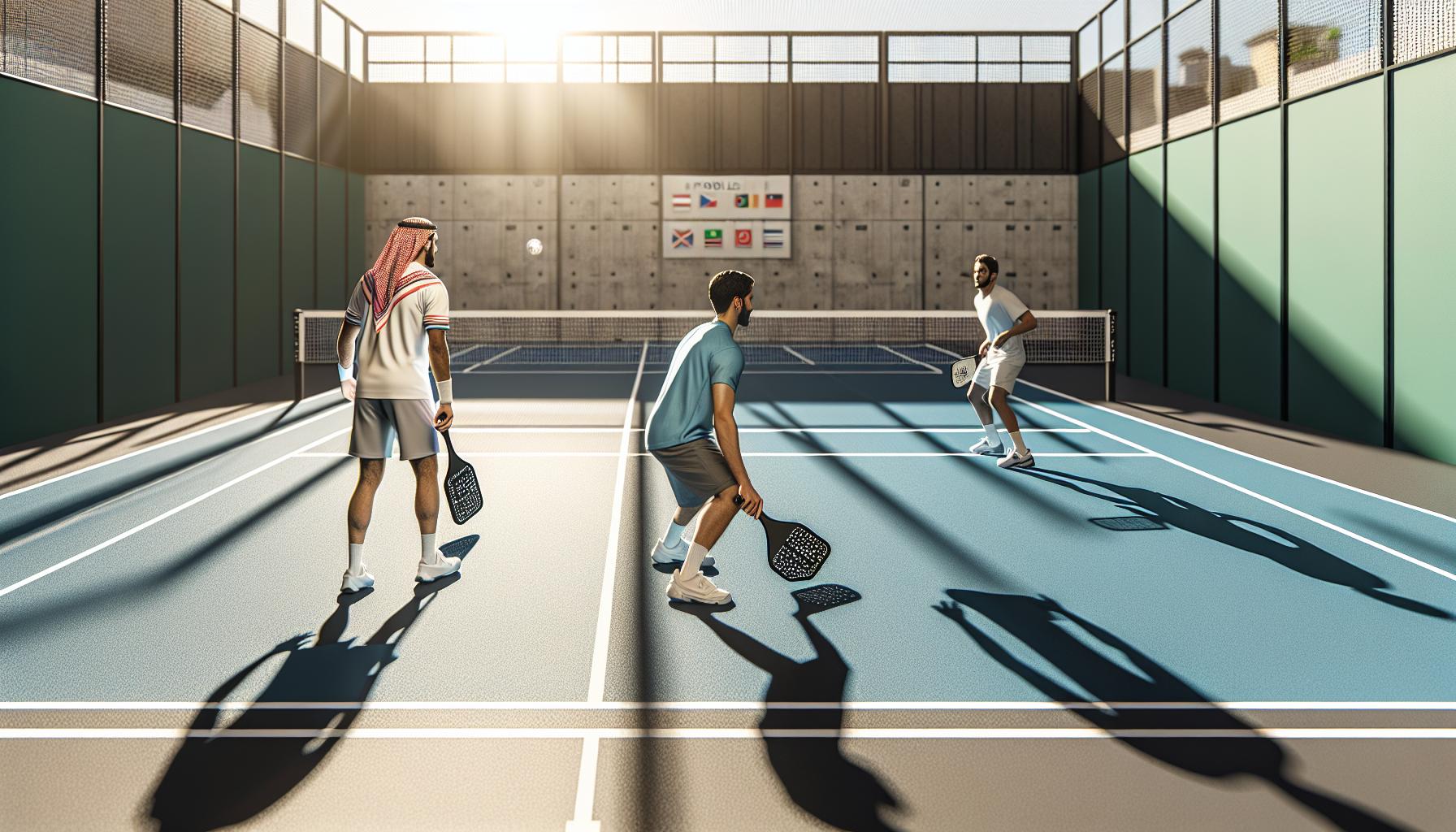
When diving into the world of pickleball, it’s crucial to recognize the strategic differences between singles and doubles play, especially in terms of court positioning and movement. These differences not only affect the flow of the game but also dictate the techniques and strategies players must adopt to excel.
In singles play, the player has the entire court to cover, which demands a high level of stamina and speed. Effective positioning in singles hinges on maintaining control over the center of the court. This central location allows a player to reach balls on either side with minimal movement, conserving energy for powerful shots and rapid returns. Moreover, singles players often find themselves engaging in deeper baseline rallies, necessitating a slightly more rearward court positioning than in doubles. This setup enhances their ability to return deep shots and launch offensive drives.
| Play Type | Positioning | Key Focus |
|---|---|---|
| Singles | Center Dominance | Stamina and Speed |
| Doubles | Side Coverage | Communication and Coordination |
Doubles play, on the other hand, introduces a partner into the equation, drastically changing the dynamics of court coverage and positioning. Team coordination becomes paramount, with players typically dividing the court laterally. This division allows each player to focus on their side, reducing the ground each must cover and increasing reaction time to incoming shots. Doubles positioning emphasizes the importance of the “up and back” strategy, where one player positions themselves near the net for volleys and putaways, while their partner stays back to handle deeper shots. This layered approach maximizes court coverage and offensive potential.
Effective doubles teams also master the art of controlling the kitchen or the non-volley zone. Dominating this space can provide significant advantages, allowing players to execute sharp-angled volleys and dinks that can be difficult for opponents to return. Communication is key in doubles play, with partners constantly signaling and talking to each other to cover the court efficiently and set up offensive opportunities.
The Role of Communication in Court Positioning

In the dynamic environment of a pickleball game, communication isn’t just helpful; it’s essential*. Whether playing in singles or doubles, understanding the role of verbal and non-verbal cues becomes a central element in dictating the flow of the game. In doubles, this importance is magnified as players must constantly coordinate with their partner to cover the court effectively.
Verbal communication in doubles play involves calling for balls, signaling intentions, and alerting the partner about positioning. For instance, when a ball is hit down the middle, a quick “Yours!” or “Mine!” ensures that both players aren’t going for the same ball, thus preventing collisions and missed opportunities. Similarly, communicating intended shots allows partners to anticipate play and position themselves accordingly, whether it’s moving forward to apply pressure at the net or staying back to cover a lob attempt.
Non-verbal cues also play a pivotal role in court positioning and strategy. Eye contact, hand signals, and body language offer vital information without giving away intentions to opponents. Before a serve, partners might use hand signals behind their backs to indicate the direction of the upcoming serve or their planned court position. Effective use of these silent signals can give a team the upper hand by keeping their strategy concealed from opponents.
Here’s a quick glance at the vital stats emphasizing the role of communication:
| Aspect | Singles Play | Doubles Play |
|---|---|---|
| Verbal Cues | Moderate | Essential |
| Non-verbal Cues | Low | High |
| Strategy Sharing | Not Applicable | Crucial |
While singles play doesn’t involve coordinating with a partner, players still benefit from self-talk. Positive reinforcement and strategic planning spoken out loud can help maintain focus and adapt strategies on the fly. Whether it’s a reminder to “stay calm” or a mental note on an opponent’s weakness, effective self-communication in singles matches is a tool for mental and strategic advantage.
In doubles, the complexity of communication is greater. Not only do players need to master the art of clear, concise verbal exchanges, but they also need to develop a deep understanding of their partner’s non-verbal cues. This understanding doesn’t develop overnight. Regular practice sessions, drills, and gameplay help build this silent language between partners, leading to more intuitive plays and a stronger defensive and offensive game.
Footwork Techniques for Efficient Movement on the Court
In the fast-paced game of pickleball, mastering footwork techniques is crucial for staying ahead of the ball and your opponent. Efficient movement not only conserves energy but also positions players to make the best play possible. This section breaks down essential footwork strategies that players at all levels can incorporate into their game.
Split Step: The Foundation of Pickleball Movement
The split step is a fundamental movement in pickleball that players should perform as their opponent hits the ball. It involves a small, quick hop that lands the player on the balls of their feet, with knees slightly bent and ready to move in any direction. This preparatory move allows players to react swiftly to their opponent’s shot, making it easier to reach the ball in time and execute a strong return.
Lateral Movement: Mastering Side-to-Side Action
Lateral movement is key in covering the width of the pickleball court. Players should focus on moving side-to-side with quick, shuffle steps without crossing their feet. This technique ensures stability and speed when reaching for wide shots. Additionally, staying low with bent knees during lateral moves improves balance and readiness.
Forward and Backward Movement: Controlling the Court Length
Managing the depth of the court requires players to adeptly move forward and backward. Approaching the net for volleys or moving back for lobs necessitates smooth, quick steps. When moving forward, it’s important to take controlled steps to prevent overrunning the ball. Conversely, moving backward requires players to push off the front foot and use backward shuffles, which maintain readiness for returning high balls.
The Importance of Footwork Drills
Regular practice of footwork drills is indispensable for developing quick and efficient court movement. Drills can include:
- Ladder drills for agility and foot speed.
- Cone drills that simulate game situations requiring quick changes in direction.
- Shadow playing where players mimic game movements without the ball, enhancing muscle memory.
Integrating these drills into practice sessions improves reaction time, promotes better court coverage, and ultimately raises a player’s game level.
Mastering the Art of the Kitchen
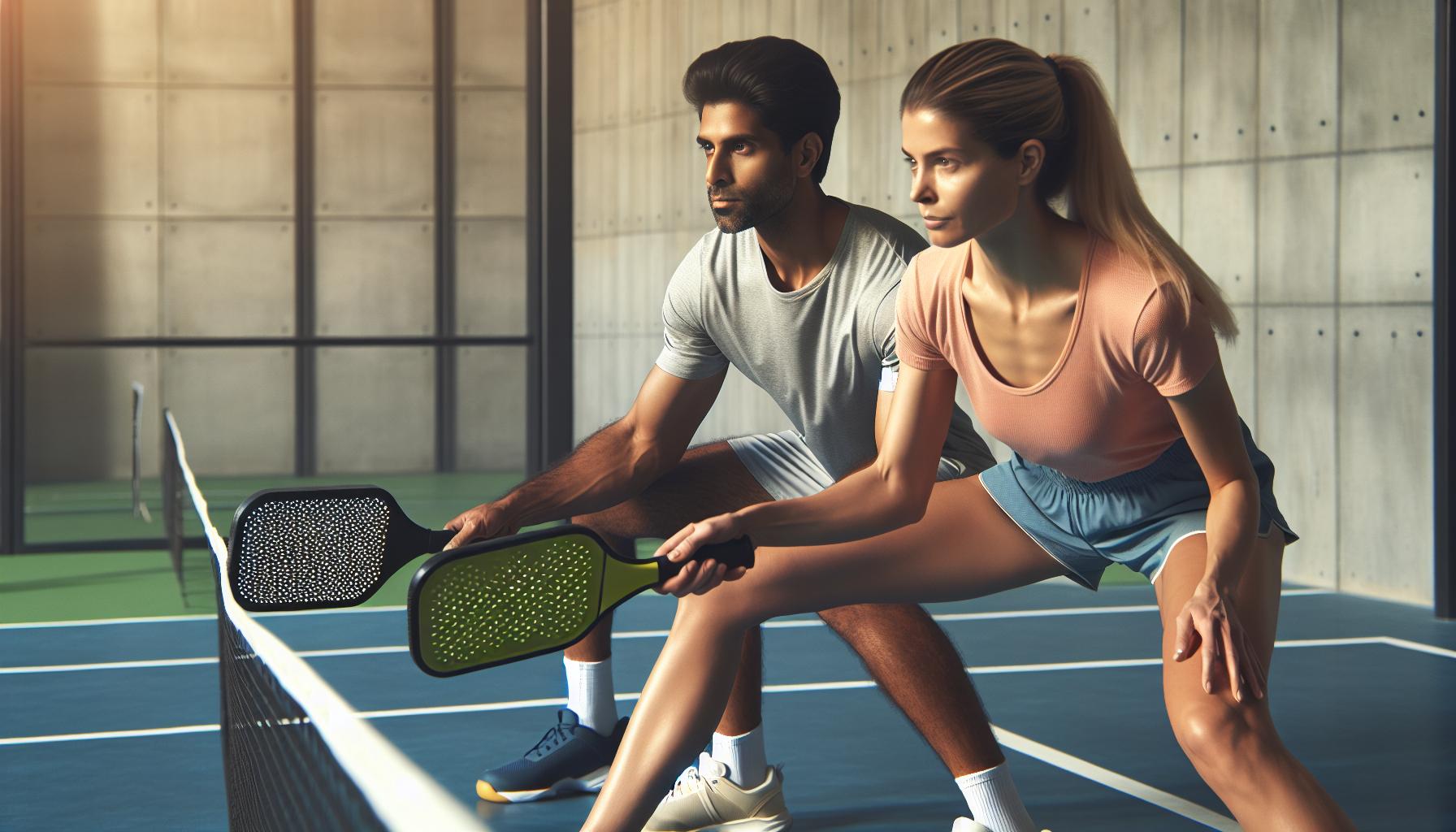
In pickleball, the area within seven feet on either side of the net, known as the “kitchen” or the non-volley zone, is where matches are often won or lost. Mastering this part of the court requires not just finesse but a deep understanding of strategy and spatial awareness. Successful players know that controlling the kitchen is key to dictating the pace and direction of the game.
The kitchen forces players to rely on soft game techniques, such as dinks, drop shots, and soft volleys, to outmaneuver their opponents. Dinks are gentle, arcing shots aimed just over the net, meant to land in the opponent’s kitchen. They’re crucial in setting up offensive plays or in neutralizing aggressive shots from the opposition. Drop shots, similarly, are soft shots from the baseline into the opponent’s kitchen, designed to pull them up to the net and open the court for further play.
Effective kitchen play also involves a keen eye for Non-Verbal Cues from opponents. Players should watch for shifts in body language and eye movements to predict shots and position themselves accordingly. This silent communication between opponents adds an intriguing layer of strategy to the game.
To dominate the kitchen, players must also perfect their Positioning. This includes:
- Staying on Your Toes: Keeping the body in a constant state of readiness allows for quick movements in any direction. This stance is essential for reacting swiftly to dinks and drop shots.
- Close Proximity to the Kitchen Line: Hovering near the kitchen line without stepping into it puts players in an ideal position to volley and apply pressure on their opponents.
- Sideways Stance: Facing the net with a sideways stance increases reach and allows for a wider range of motion, making it easier to return balls on either side.
Practicing with drills specifically designed to improve kitchen skills is vital. For instance, dinking drills that focus on placement and consistency can help players learn how to control the tempo of the game. Additionally, playing mock games where the aim is to keep the ball in the kitchen as long as possible can enhance players’ soft game strategies.
Developing Tactical Awareness in Pickleball

Tactical awareness in pickleball is as crucial as physical agility. Players with high tactical awareness can anticipate their opponents’ moves, prepare for the next shot before it’s played, and position themselves optimally on the court. This section delves into how players can develop and enhance their tactical skills in pickleball.
The journey towards tactical mastery begins with observation. Watching advanced players and analyzing professional matches can be incredibly insightful. Observing how pros navigate the court, change their strategies mid-game, and communicate can offer valuable lessons. Players should focus on how professionals position themselves during different plays and the types of shots they opt for in varying situations.
Another key aspect is mental rehearsal. Visualizing different game scenarios and imagining oneself executing the perfect shot can prepare a player for real-game situations. This mental practice helps in enhancing spatial awareness on the court and aids in making split-second decisions during high-pressure moments.
Drills designed to improve decision-making are also vital. Here are a few examples:
- Shadow Drilling: Mimicking game moves without the ball helps improve footwork and court positioning.
- Situational Play: Practicing specific scenarios, like being down by a point, can help players learn how to stay calm and strategize under pressure.
- Reaction Drills: Having a partner randomly call out shots during practice can improve a player’s quick thinking and adaptability.
Players should also engage in regular match play against varied opponents. Facing different playing styles and strategies helps in building a comprehensive game plan and adapts one’s style to counter various tactics effectively. It’s not just about playing more matches but about reflecting on each game, recognizing patterns, and identifying areas for improvement.
Developing tactical awareness also involves understanding the significance of soft skills. Communication with one’s partner, reading the opponent’s body language, and controlling the pace of the game are all critical elements. Players need to learn the art of deception, such as disguising shots or using the eyes to mislead opponents about their next move.
Lastly, keeping up with new techniques and strategies emerging in the world of pickleball is essential. The game is evolving, and so are the methods to win. Staying informed about the latest trends and incorporating them into one’s practice can provide a competitive edge.
Conclusion
Mastering pickleball court positioning and movement is a journey that blends physical skills with mental acuity. By focusing on effective communication and honing footwork, players can navigate the court with confidence. Embracing the kitchen’s dynamics and integrating tactical awareness into one’s play are crucial steps toward becoming a formidable opponent. Engaging in regular matches and staying curious about evolving strategies ensure continuous improvement. Remember, the path to pickleball proficiency is as much about the joy of learning as it is about the thrill of competition.

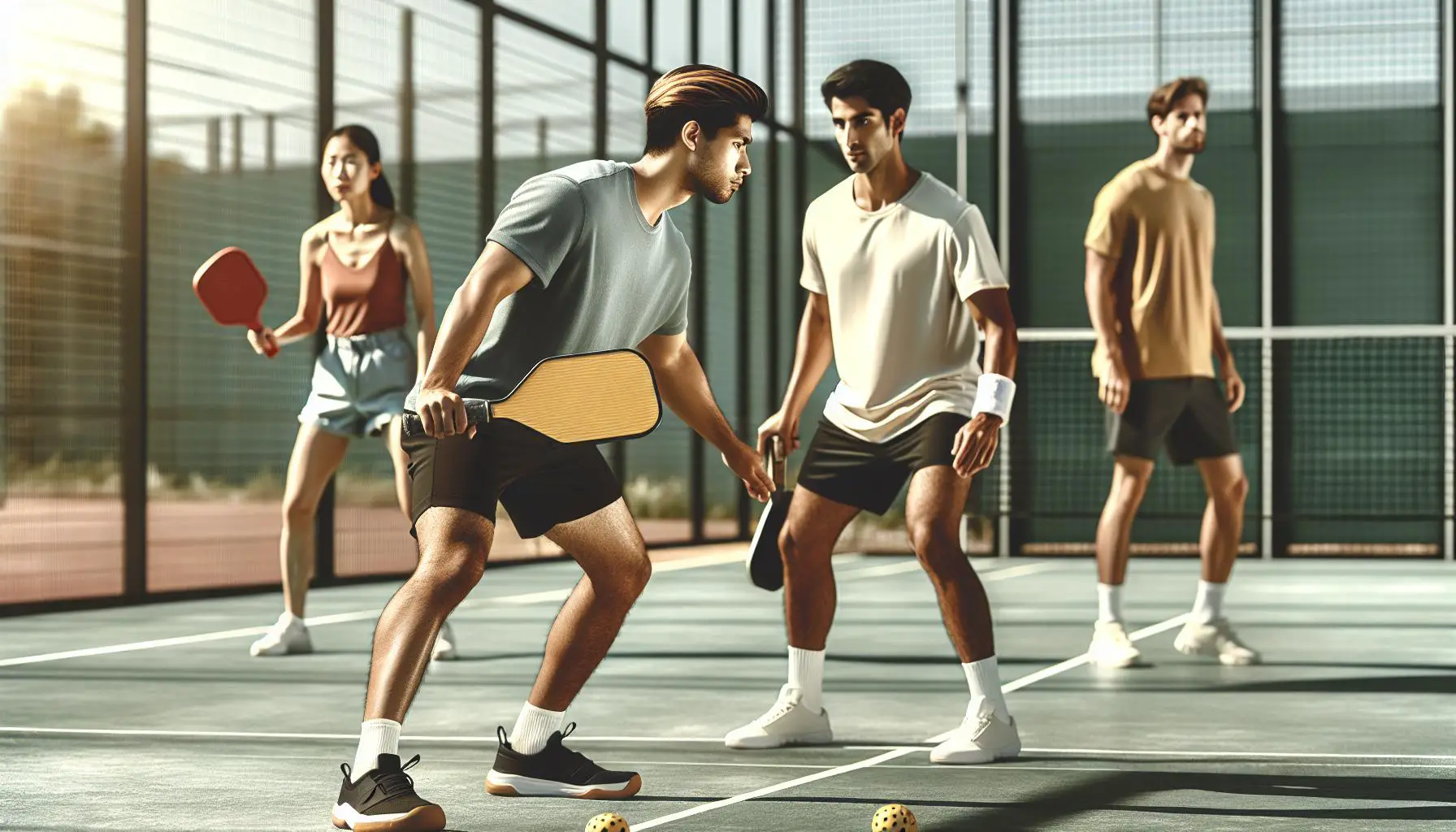









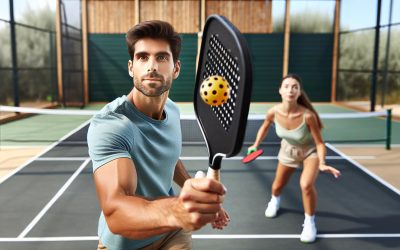
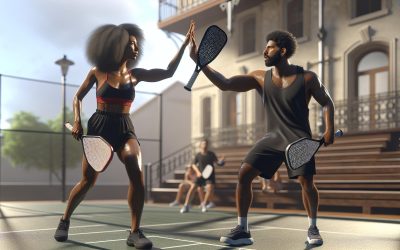

0 Comments